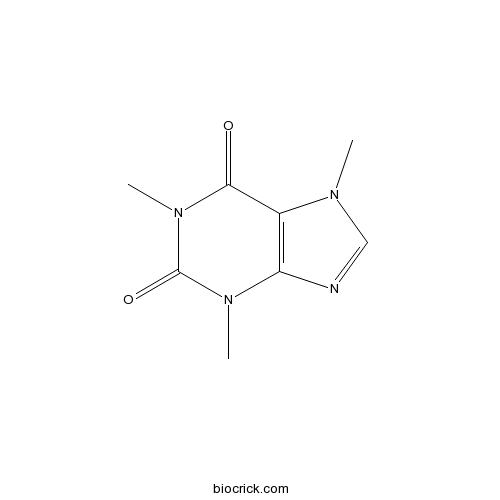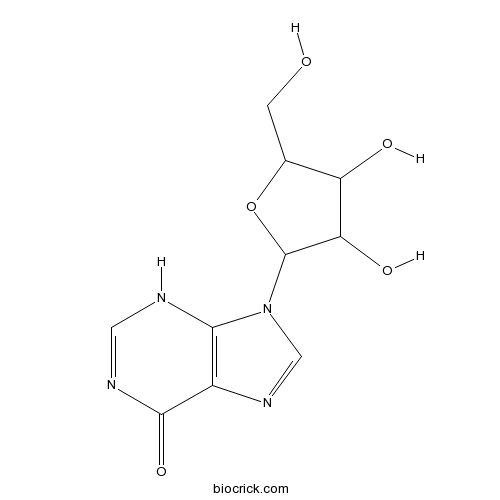Cichorium glandulosum
Cichorium glandulosum
1. The products in our compound library are selected from thousands of unique natural products; 2. It has the characteristics of diverse structure, diverse sources and wide coverage of activities; 3. Provide information on the activity of products from major journals, patents and research reports around the world, providing theoretical direction and research basis for further research and screening; 4. Free combination according to the type, source, target and disease of natural product; 5. The compound powder is placed in a covered tube and then discharged into a 10 x 10 cryostat; 6. Transport in ice pack or dry ice pack. Please store it at -20 °C as soon as possible after receiving the product, and use it as soon as possible after opening.
Natural products/compounds from Cichorium glandulosum
- Cat.No. Product Name CAS Number COA
-
BCN5807
Caffeine58-08-2
Instructions

-
BCN3841
Inosine58-63-9
Instructions

The protective effects of Cichorium glandulosum seed and cynarin against cyclophosphamide and its metabolite acrolein-induced hepatotoxicity in vivo and in vitro.[Pubmed: 27966724]
Cyclophosphamide (CP) is a widely utilized chemotherapy drug. CP and its metabolite, acrolein, could induce hepatotoxicity. In this study, Cichorium glandulosum seed (CGS) effectively mitigated CP-induced hepatotoxicity in mice. Protection of cynarin, the major compound of CGS, against acrolein cytotoxicity in HepG2 cells was studied. Pretreatment with cynarin could improve cell survival against acrolein cytotoxicity. Cynarin restored the balance of glutathione (GSH) and reactive oxygen species (ROS), and inhibited mitochondrial depolarization. The kinetics of Nrf2 expression in cytosolic and nuclear fractions were observed after acrolein exposure. Intracellular Nrf2 expression was triggered within 6 h of exposure but did not translocate to the nucleus. Cynarin pretreatment ameliorated the expression and activity of GSH S-transferase and triggered Nrf2 nuclear translocation. In conclusion, treatment with CGS and cynarin protects liver injury against CP and acrolein hepatotoxicity via improvement of GSH activity and activation of the Nrf2 pathway.
Dicaffeoylquinic Acid-Enriched Fraction of Cichorium glandulosum Seeds Attenuates Experimental Type 1 Diabetes via Multipathway Protection.[Pubmed: 26586022]
Chicory has a major geographical presence in Europe and Asia. Cichorium glandulosum Boiss. et Huet, a genus Cichorium, is used for medicinal and food purposes in Asia. In this study, a dicaffeoylquinic acid-enriched fraction of C. glandulosum seeds n-BuOH fraction (CGSB) could ameliorate type 1 diabetes mellitus (T1DM) in streptozotocin (STZ)-induced diabetic mice with continuous administration for 2 weeks. CGSB treatment showed significantly higher plasma insulin levels but lower free fatty acids in adipose tissue and liver. Moreover, CGSB improved pancreatic islet mass. In vitro, different fractions of C. glandulosum seed (CGS) induced the differentiation of 3T3-L1 preadipocytes. The mRNA level for peroxisome proliferator-activated receptor alpha increased in high glucose treatment group in HepG2 cells, while CGSB significantly down-regulated the mRNA expression. The main compound of CGSB, 3,5-dicaffeoylquinic acid, was isolated and identified, which exhibited α-glucosidase inhibitory activity. These findings demonstrated that CGSB attenuated experimental T1DM via multipathway protection.
Hepatoprotective activity of flavonoids from Cichorium glandulosum seeds in vitro and in vivo carbon tetrachloride-induced hepatotoxicity.[Pubmed: 26320690]
Cichorium glandulosum Boiss. et Huet was used historically in Uyghur folk medicine. Its roots, seeds, and aerial parts are extensively used by Uyghur residents in Xinjiang to eliminate savda typhoid, dredge and cure obstructive jaundice variety liver disorders.
Protection of rats from thioacetamide-induced hepatic fibrosis by the extracts of a traditional Uighur medicine Cichorium glandulosum.[Pubmed: 25691930]
To clarify the protective effects of Cichorium glandulosum (CG) extracts on thioacetamide (TAA)-induced rat hepatic fibrosis.
Lipid modulatory activities of Cichorium glandulosum Boiss et Huet are mediated by multiple components within hepatocytes.[Pubmed: 24797163]
To investigate a possible methodology of exploiting herbal medicine and design polytherapy for the treatment of non-alcoholic fatty liver disease (NAFLD), we have made use of Cichorium glandulosum Boiss et Huet (CG), a traditional Chinese herbal medicine that has been proven to be effective in treating hepatic diseases. Here, we report that the extract of CG effectively reduced lipid accumulation under conditions of lipid overloading in vivo and in vitro (in a rat high-fat diet model and a hepG2 cell model of free fatty acid treatment). CG extract also protected hepatocytes from injury and inflammation to aid its lipid-lowering properties (in a rat high-fat diet model and a L02 cell model of acetaminophen treatment). Serum chemistry analysis accompanied by in vitro drug screening confirmed that CG-4, CG-10 and CG-14 are the lipo-effective components of CG. Western blotting analysis revealed that these components can regulate key lipid targets at the molecular level, including CD36, FATP5 and PPAR-α, thus the lipid oxidation and lipid absorption pathways. Finally, we adopted the experimental design and statistical method to calculate the best combination proportion (CG-4: CG-10: CG-14 = 2.065: 1.782: 2.153) to optimize its therapeutic effect.
Effect of Cichorium Glandulosum Extracts on CCl4-Induced Hepatic Fibrosis.[Pubmed: 24693382]
Cichorium glandulosum (CG), which is a Compositae family plant, is a commonly used traditional Uighur medicine capable of cleansing liver and being cholagogue, strengthening stomach, promoting digestion, inducing diuresis and reducing edema.
Protective effect of Cichorium glandulosum seeds from ultraviolet B-induced damage in rat liver mitochondria.[Pubmed: 24595542]
Cichorium glandulosum Boiss. et Huet, a common herb for treating hepatitis, is indigenous to Europe, Western Asia, and the Xinjiang Uygur Autonomous Region of China. This study aims at evaluating the protective activity of different extracts from C. glandulosum seeds against experimental oxidation- and ultraviolet B (UVB)-induced damage in rat liver mitochondria. The antioxidant property of different extracts from C. glandulosum seeds was investigated by employing various established in vitro systems, such as α,α-diphenyl-β-picrylhydrazyl, 2,2'-azinobis(3-ethylbenzthiazoline-6-sulphonic acid), and reducing power assay. The protective effects of different C. glandulosum seed extracts against UVB-induced phototoxicity in a mitochondria model were also evaluated by measuring thiobarbituric acid reactive substances, glutathione, lipid hydroperoxide, conjugated diene, and 4-hydroxynonenal. The main compounds in C. glandulosum seeds were identified by HPLC-PDA-ESI-MS/MS. The results showed that C. glandulosum seed extracts have strong antioxidant activity, in which the ethyl acetate extract (EE) and n-butanol extract (BE) showed better activity than other extracts. In a UVB-induced mitochondria model, both EE and BE have better antioxidant activity and protective effects against phototoxicity than the petroleum ether extract, chloroform extract, and water extract. The differences in antioxidant activity and photoprotective capacity among these five extracts are associated with their phenolic compound content. Therefore, research on this function of C. glandulosum seeds may broaden their applications in the food and medical industry.


